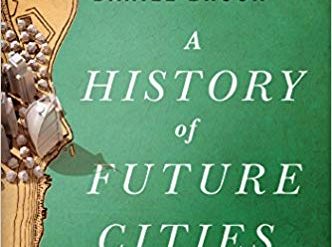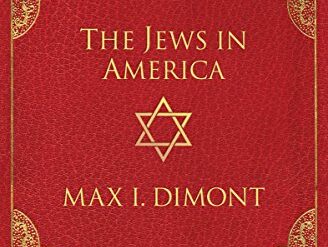
Something strange was afoot. A mere geographer, Jared Diamond, had had the temerity to publish a history book, upending centuries of historians’ speculations about the reasons why civilization first developed in the Middle East. It was 2005, and the book was Guns, Germs, and Steel. History by non-historians? Unthinkable.
Estimated reading time: 6 minutes
Five years later an archaeologist, Ian Morris, wrote another history book for the general reader called Why the West Rules—for Now. Building on Diamond’s thesis, Morris laid out his own, more comprehensive view of the course of human history, reaching back 15,000 years and venturing into the 22nd Century.
Debunking the Great Man Theory of History
While some historians still engaged in the stale debate about whether “Great Men” or social forces and ideas are dominant in history, Diamond and Morris convincingly laid out the case for the greater influence of the larger context in which human history takes place. They delved not just into geography but also (in Morris’ case) into biology, sociology, and archaeology.
Subscribe now. No ads, and it’s entirely free. >>>
In fact, Morris has little patience for the Great Man Theory of History. “The most that any of these great men/bungling idiots did was to speed up or slow down processes that were already under way,” he writes. “None really wrestled history down a whole new path. Even Mao, perhaps the most megalomaniac of all, only managed to postpone China’s industrial takeoff.”
Why the West Rules—for Now: The Patterns of History, and What They Reveal About the Future by Ian Morris (2010) 768 pages ★★★★★

A lively and readable survey of human history
As you may surmise, this is not a dry college textbook. Just for example, the author advances what he calls, tongue in cheek, the “Morris Theorem” that “Change is caused by lazy, greedy, frightened people looking for easier, more profitable, and safer ways to do things. And they rarely know what they’re doing.” There are times when the pace drags, as when Morris follows the endless rise and fall of Chinese dynasties. But on the whole the book is lively and eminently readable.
Like Diamond, Morris set out to understand why what today is called “the West” has dominated the planet for at least the past two centuries. The standard historical explanation is that sometime around 1800, the Industrial Revolution caused a sharp increase in development in Europe and North America. As Morris explains, however, “this upturn was itself only the latest example of a very long-term pattern of steadily accelerating social development.”
Measuring “social development” with a four-factor tool
In Why the West Rules, Morris explores the state of society and the quality of life in both West and East since long before the onset of written history in the first millennium BCE. In fact, he traces human history since the passing of the last Ice Age 15,000 years ago. With a four-factor analytical tool of his own, Morris measures “social development” since then in each of the two broad regions of East and West. (His four benchmarks are “energy capture, urbanization, information technology, and war-making capacity.”) From this perspective, viewing history a thousand years at a time, he concludes that “the East has been the most developed region of the world for fourteen of the last fifteen millennia.”
It is that exception—a period of about 1,200 years from the Sixth Century until the 18th, when the West finally wrested itself out of the legacy of the Dark Ages—that Morris seizes upon to refute those who assert that the West has always “ruled” and is destined to do so forever.
Discerning the shape of things to come
As telegraphed in his subtitle (The Patterns of History, and What They Reveal About the Future), Morris’s ultimate goal is to discern the shape of times to come. His conclusion is noncommittal: “The great question for our times is not whether the West will continue to rule. It is whether humanity as a whole will break through to an entirely new kind of existence before disaster strikes us.”
About the author

According to his biography at the Stanford University King Center for Global Development, “Ian Morris is a historian and archaeologist and holds Stanford’s Jean and Rebecca Willard Professorship in classics. In addition to his Stanford appointment, he is also a senior fellow of the IDEAS think tank at the London School of Economics, a corresponding fellow of the British Academy, a senior fellow of the Institute for Advanced Studies at the University of Toulouse, a fellow of the Society of Antiquaries and the Royal Society for the Arts, a contributing editor at the strategic forecasting company Stratfor, and a member of the scientific advisory board of the Max Planck Institute.”
Wikipedia reveals further that Morris was born in Staffordshire, England in 1960 and educated at the University of Birmingham and Cambridge University, where he received his PhD in Archaeology. After teaching for eight years at the University of Chicago, he moved to Stanford in 1995 and has been on the faculty there ever since. He is the author of eight books and editor or coeditor of many more.
Morris describes himself as an archaeologist, and he has been an academic for more than thirty-five years. But his interests are clearly more expansive than those of the typical college history teacher. In Why the West Rules, he draws upon insights and examples from science fiction, popular film and television shows, and from his own personal experience on excavations in Sicily. This is how history should be written!
For related reading
For a broader view of human history like this book’s, check out New perspectives on world history. And, to see how Morris’s views fit in an analysis of the world today, see Gaining a global perspective on the world around us.
You might also be interested in a more recent book that offers another angle on the history of the West: The West: A New History in Fourteen Lives by Naoise Mac Sweeney (Debunking the myth of “Western Civilization”). And you may enjoy browsing through 20 top nonfiction books about history.
For insight into a closely related subject, see Third World poverty and economic development: a reading list.
You’ll find this book on The 40 best books of the decade from 2010-19.
And you can always find my most popular reviews, and the most recent ones, on the Home Page.

























